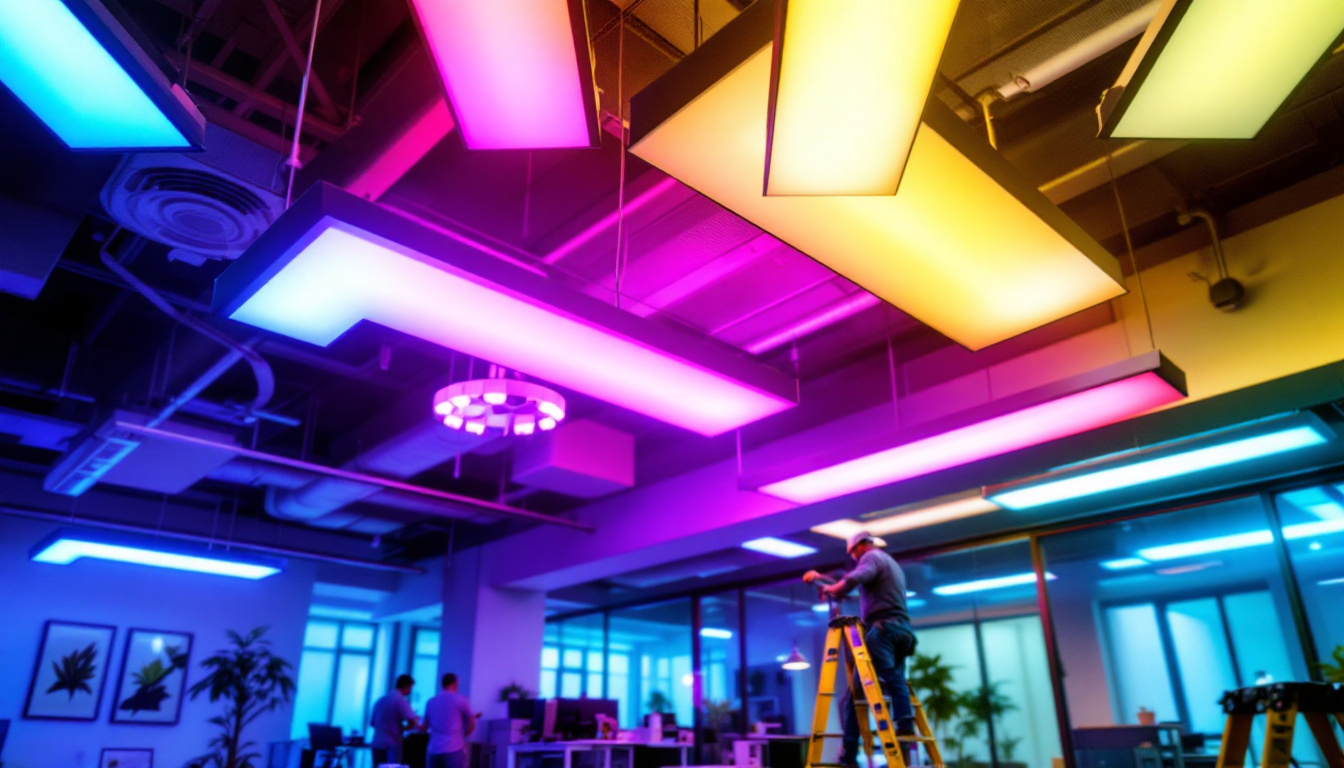

As the demand for sustainable and energy-efficient solutions continues to rise, solar-powered light posts have emerged as a viable option for lighting contractors. These innovative fixtures not only reduce energy costs but also contribute to environmental conservation. This article delves into the key points that lighting contractors should consider when integrating solar-powered light posts into their offerings.
Solar-powered light posts harness solar energy to illuminate outdoor spaces. They consist of solar panels, batteries, LED lights, and a control system that manages energy consumption. Understanding the components and functionality of these systems is crucial for lighting contractors looking to expand their services.
The primary components of solar-powered light posts include:
Each component plays a vital role in ensuring the efficiency and reliability of the lighting system. A thorough understanding of these elements will enable contractors to provide informed recommendations to their clients. For instance, selecting the right type of solar panel can significantly affect the overall energy output, while choosing high-capacity batteries ensures that the lights remain operational even during extended periods of low sunlight. Additionally, advancements in LED technology continue to improve brightness and energy efficiency, making it essential for contractors to stay updated on the latest developments.
Solar-powered light posts offer numerous advantages that can appeal to both contractors and their clients:
These benefits not only enhance the appeal of solar-powered lights but also position contractors as forward-thinking professionals in the lighting industry. Moreover, the aesthetic design of many solar light posts can complement various architectural styles, making them suitable for residential areas as well as urban developments. As communities increasingly prioritize sustainability, the demand for solar lighting solutions is likely to grow, providing contractors with ample opportunities to engage in eco-friendly projects that resonate with environmentally conscious clients. Additionally, many municipalities are beginning to adopt solar lighting as part of their urban planning initiatives, further expanding the market for these innovative solutions.
While solar-powered light posts present numerous advantages, there are several factors that contractors must consider during installation to ensure optimal performance.
The effectiveness of solar-powered light posts largely depends on their location. Areas with ample sunlight will yield better performance, while shaded locations may hinder the system’s ability to generate energy.
Contractors should assess potential installation sites for sunlight exposure throughout the day. This evaluation may involve considering nearby structures, trees, or other obstacles that could obstruct sunlight. Proper placement will ensure that the solar panels receive adequate sunlight, maximizing energy production and extending the lifespan of the batteries. Furthermore, it is beneficial to conduct a seasonal analysis, as the angle of the sun changes with the seasons, which can affect sunlight exposure. For instance, a location that is sunny in summer might be partially shaded in winter, potentially impacting performance during those months.
Battery capacity is another critical consideration. The size and type of battery used will determine how long the lights can operate during the night and how well they perform during cloudy or rainy days.
Contractors should evaluate the energy requirements of the lighting system and select batteries that can store sufficient energy to meet those needs. Additionally, understanding the battery’s discharge rate and lifespan will help in providing clients with realistic expectations regarding performance and maintenance. It’s also worth noting that advancements in battery technology, such as lithium-ion batteries, offer improved efficiency and longer life cycles compared to traditional lead-acid batteries. By opting for these newer technologies, contractors can enhance the reliability of solar lighting systems, ensuring they remain functional even during extended periods of low sunlight. Moreover, regular maintenance checks on battery health can prevent unexpected failures and prolong the overall system’s operational life.
One of the appealing aspects of solar-powered light posts is their low maintenance requirements. However, regular checks and maintenance are essential to ensure longevity and optimal performance.
Contractors should recommend routine inspections to clients to identify potential issues before they escalate. This may include checking for debris on solar panels, ensuring that the batteries are functioning correctly, and verifying that the LED lights are operating efficiently.
In addition, monitoring the overall condition of the light post structure is important. Weather elements can affect the integrity of the installation, so regular assessments will help maintain safety and functionality. For instance, heavy winds or storms may loosen fixtures or cause structural damage, making it crucial to inspect the light posts after severe weather events. Furthermore, checking for signs of rust or corrosion can prevent long-term damage and preserve the aesthetic appeal of the installation.
While solar batteries are designed for longevity, they will eventually need replacement. Contractors should educate clients about the expected lifespan of the batteries and the signs that indicate a need for replacement.
By providing guidance on battery maintenance and replacement, contractors can help clients maximize the performance of their solar-powered light posts, ensuring they remain a reliable lighting solution for years to come. Additionally, it’s beneficial to discuss the different types of batteries available, such as lithium-ion versus lead-acid, as each type has its own advantages and disadvantages in terms of efficiency, cost, and environmental impact. This knowledge empowers clients to make informed decisions that align with their sustainability goals while also enhancing the overall performance of their solar lighting systems.
As with any installation, lighting contractors must be aware of local regulations and codes that may impact the use of solar-powered light posts. Compliance with these regulations is essential for ensuring safety and legality.
Before installation, contractors should research local permitting and zoning laws related to outdoor lighting. Some municipalities may have specific requirements regarding the height, brightness, and placement of light posts.
Understanding these regulations will help contractors avoid potential fines and ensure that installations meet community standards. It may also be beneficial to work closely with local authorities to facilitate the permitting process.
Additionally, contractors should take into account any historical preservation guidelines that may affect the installation of solar-powered light posts in certain areas. For example, in districts with historical significance, there may be restrictions on the types of materials used or the aesthetic design of the fixtures. Engaging with local historical societies or preservation boards can provide valuable insights and help in designing installations that respect the character of the neighborhood while still meeting modern lighting needs.
In addition to zoning laws, contractors should be aware of any environmental regulations that may apply to solar installations. This includes considerations related to wildlife protection, habitat preservation, and the use of sustainable materials.
By adhering to these regulations, contractors can position themselves as responsible and environmentally-conscious professionals, further enhancing their reputation in the industry.
Moreover, contractors should consider the lifecycle impact of the solar products they choose to install. This involves evaluating the sourcing of materials, the manufacturing processes, and the end-of-life disposal or recycling options for solar panels and batteries. By opting for products that are certified for sustainability, such as those with Energy Star ratings or similar certifications, contractors can not only comply with environmental regulations but also appeal to eco-conscious clients who prioritize green solutions in their projects.
The market for solar-powered lighting is growing rapidly, driven by increasing awareness of sustainability and energy efficiency. Lighting contractors should stay informed about the latest trends and innovations in this sector to remain competitive.
Recent advancements in solar technology have led to more efficient solar panels and batteries, resulting in improved performance for solar-powered light posts. As technology continues to evolve, contractors should keep an eye on emerging products that may offer enhanced features or greater energy efficiency.
Additionally, smart technology integration is becoming increasingly popular. Solar-powered lights equipped with sensors and connectivity features can provide enhanced functionality, such as motion detection and remote monitoring, appealing to clients seeking modern solutions.
Understanding consumer preferences is crucial for contractors looking to market solar-powered light posts effectively. Many clients are now prioritizing sustainability and energy efficiency in their purchasing decisions.
Contractors can capitalize on this trend by highlighting the environmental benefits of solar lighting and showcasing successful installations. Providing case studies and testimonials can also help build trust and credibility with potential clients.
Solar-powered light posts present a unique opportunity for lighting contractors to expand their service offerings while contributing to a more sustainable future. By understanding the components, advantages, and considerations associated with these systems, contractors can provide valuable insights to their clients.
As the market for solar lighting continues to grow, staying informed about technological advancements and consumer preferences will be essential for success. By embracing these innovative solutions, lighting contractors can position themselves as leaders in the industry, paving the way for a brighter, more sustainable future.
Ready to lead the charge in sustainable lighting solutions? At LumenWholesale, we provide lighting contractors with the highest quality solar-powered light posts and spec-grade lighting products at unbeatable wholesale prices. Say goodbye to inflated markups and hello to a vast selection of industry-standard, reliable lighting options. With the added convenience of free shipping on bulk orders, you can ensure your projects shine brightly while enjoying the best value. Don’t compromise on quality or cost. Discover wholesale lighting at the best value today and brighten the path to a sustainable future with LumenWholesale.

Discover how light diffusers for fluorescent lights can transform spaces and elevate your lighting contracting business.

Discover why lighting contractors should focus on floor lighting in their projects.

Discover essential insights for lighting contractors in our comprehensive guide on switches and receptacles.

Discover how Industrial Lighting Products in Sanford are transforming projects with real-world success stories.
Get notified when NEW deals are released.
Optimize your budget with wholesale discounts.
Only top-quality, specification-grade lighting products.
No additional costs at checkout - what you see is what you pay.
We understand the unique needs of contractors.